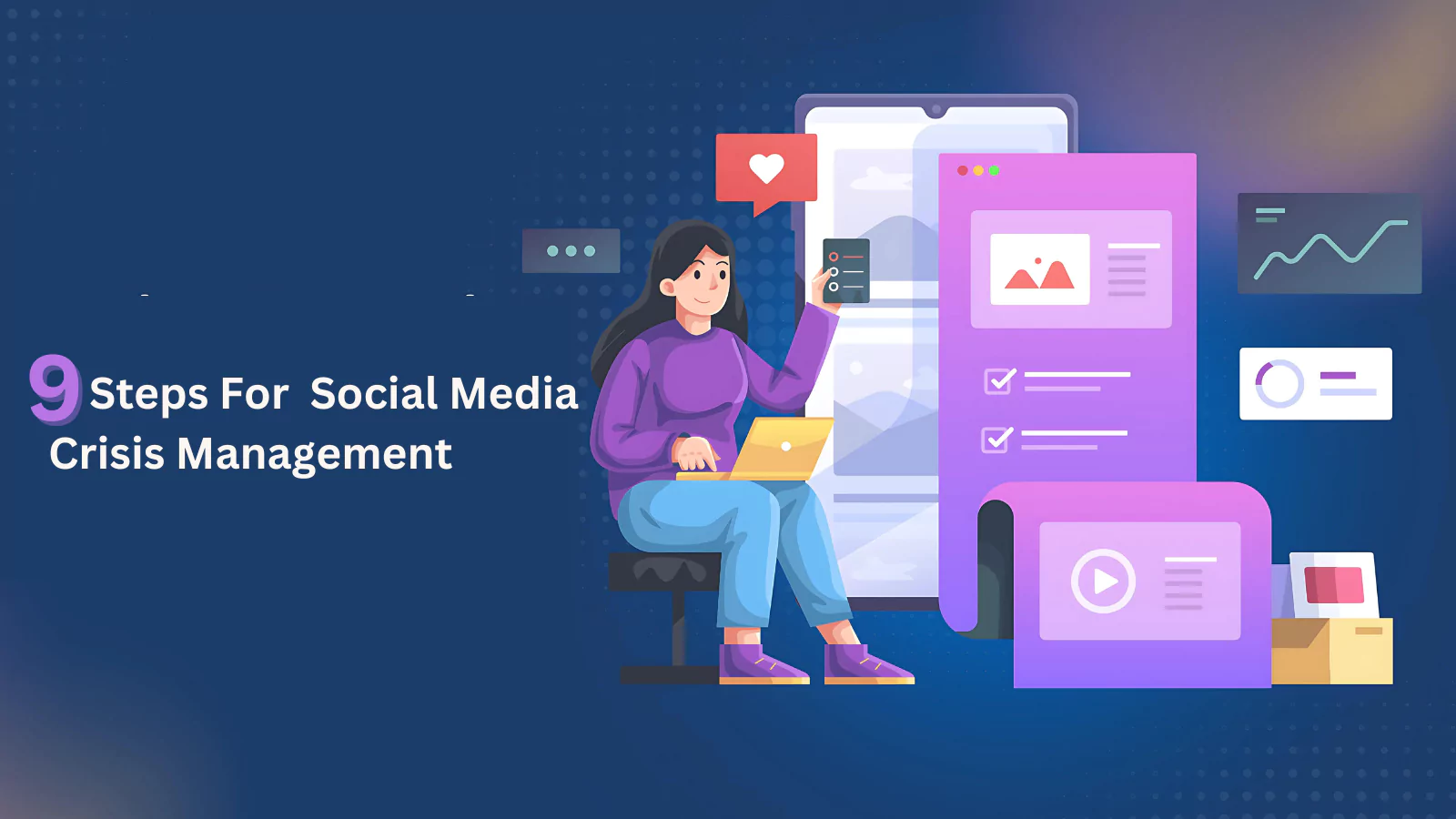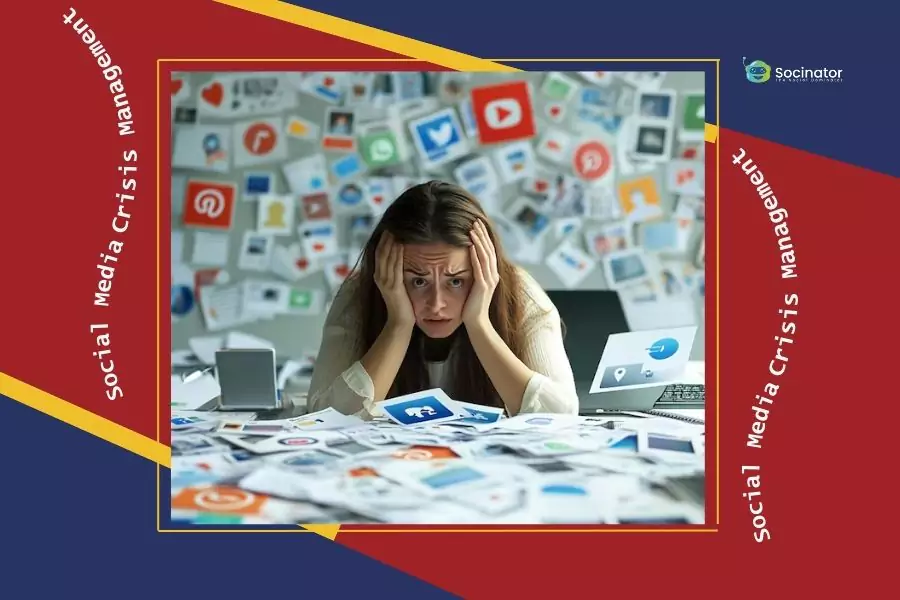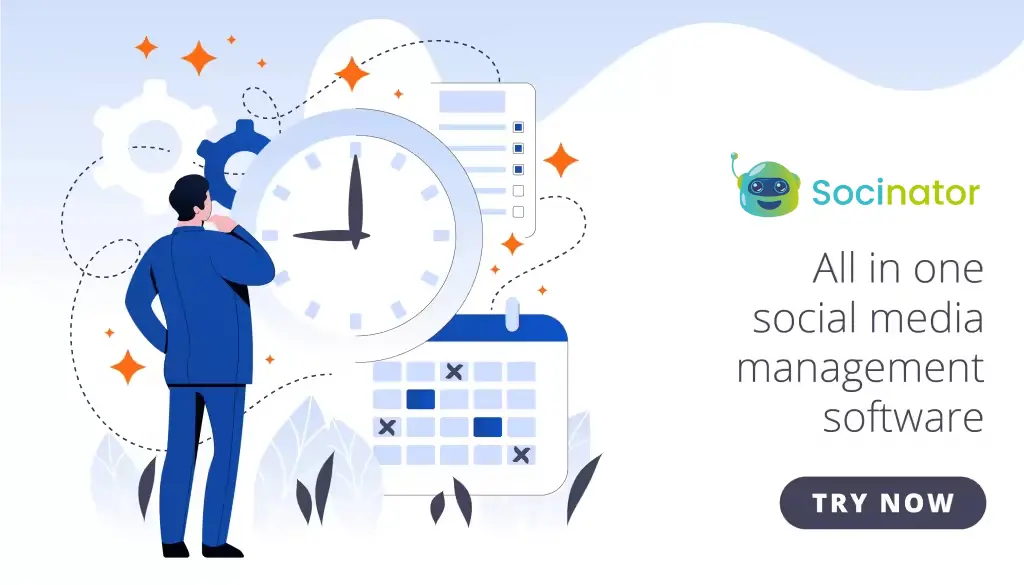Social media can make or ruin a brand’s success in a moment. A single misstep, whether from a misunderstood post or negative customer experience, can quickly escalate into a full-blown crisis, putting your brand’s reputation at risk.
Social media crisis management is about staying prepared, responding effectively, and mitigating potential damage before it spirals out of control.
This guide explores social media management tips and steps to help your business navigate the storm and protect your brand’s image in challenging times.
Listen To The Podcast Now!
About Social Media Crisis Management
Social media crisis management is a strategy designed to minimize the damage caused by a widely shared negative message about a brand on social media platforms.
For example, when a brand owner issues a public statement or apology after a problem arises, that’s a key part of the brand’s social media crisis management plan. However, the role of social media in crisis management goes well beyond just sharing an apology. It involves developing a thorough response strategy, using social media listening to detect crises early, and taking all necessary steps before, during, and after to reduce online backlash that could harm the brand’s reputation.
It’s essential to understand that social media crisis management differs from social media crisis communication, which centers on how your brand reacts to external crises outside your control, such as natural disasters or global events like pandemics.
Advantages Of Social Media Crisis Management
 The positive aspect of social media is its potential as a robust tool for handling business crises.
The positive aspect of social media is its potential as a robust tool for handling business crises.
1. Wide-Reaching Communication:
Social media enables you to reach nearly your entire customer base through one or two platforms. It allows for rapid dissemination of important messages and helps you manage a crisis more effectively.
Social media crisis examples: Midwest utility company WE Energies faced an unexpected power disruption and promptly issued a critical update on social media. They used Facebook to keep their customers informed, providing updates as more information came in. After the initial post, they continued to reach out to media and customers via email and text, resolving the shortage by the following morning.
2. Tailored Communication And Issue Resolution:
Social media allows for direct customer interaction through direct messaging or comments. If a customer encounters an issue, your service team can immediately respond publicly or privately. A well-handled public response can demonstrate your team’s professionalism.
Crisis Management Example: Spectrum Brands uses Facebook and Twitter messaging to address issues quickly and effectively, in addition to traditional communication methods.
3. Fostering Transparency:
Social media is often the first place consumers turn to when breaking news occurs. Effective use of social media can help brands build trust by providing clear and transparent updates to their audience.
Crisis Management Example: Southwest Airlines is known for its adept use of social media to keep customers informed, offering updates and directing them to additional resources for more information.
Recognizing the benefits of effective social media crisis management is essential for any company. The following step is to develop a comprehensive crisis contingency plan and integrate it into your social media customer service approach. We offer a resource designed to help you prepare for different crisis scenarios.
To enhance your efforts, social media automation tools like Socinator can play a vital role by automating social media monitoring and facilitating timely responses. With Socinator, you can efficiently track conversations, identify potential issues early, and engage with your audience swiftly, ensuring your crisis management strategy is both proactive and effective.
9 Steps For Social Media Crisis Management
 Social media crisis management is unpredictable and unique, but having a well-documented and adaptable crisis plan will help you navigate it effectively.
Social media crisis management is unpredictable and unique, but having a well-documented and adaptable crisis plan will help you navigate it effectively.
Step 1: Assess The Crisis And Its Impact:
Before initiating any communication, take time to understand the crisis’s origin, scope, and emotional impact. Document the details to create a clear picture of the situation, answering the five W’s:
- Who: Identify who was involved initially and who has been involved since.
- What: Describe the event factually, like a detective.
- Where: Specify the location of the event, whether online or offline.
- When: Note the exact time the event began.
- Why: Determine the cause of the crisis, whether it was a customer complaint or an internal error.
Step 2: Form A Crisis Response Team:
Ensure your crisis response team is well-defined and coordinated. Assign roles based on the scope of the crisis:
- Lead: Manages communications and coordinates with other team members.
- Approvers: Review and approve public posts.
- Technical/Product Support: Addresses safety or product-related issues.
- Legal: Ensures all communications are legally compliant.
Set permissions for each team member using tools like social media management tools to manage roles effectively.
Step 3: Develop A Response Strategy Create a comprehensive response strategy that includes:
- Triage: Decide if you need to delete posts or issue an acknowledgment.
- Key Messaging: Outline your official response and next steps.
- Channels: Determine which platforms and other communication channels to use.
- Training: Prepare customer-facing employees for inquiries.
- Incoming Messages: Plan how to manage different types of messages.
- Monitoring: Identify which platforms to keep an eye on throughout the crisis.
Step 4: Select Appropriate Communication Channels:
Choose the platforms that best suit your audience and the nature of the message. For example, addressing a product malfunction might be more suitable for LinkedIn than Instagram.
Step 5: Pause Scheduled Posts:
Even if you have an amazing post lined up, it won’t resonate if you’re dealing with a social media crisis. It’s best to set that fantastic content aside while you address the situation.
At best, a poorly timed scheduled post may come across as silly; at worst, it could significantly hinder your crisis management efforts. All communication must be planned, consistent, and appropriately toned. A post scheduled during calmer times likely won’t meet these criteria.
Step 6: Communicate Quickly And With Empathy:
Respond swiftly with a genuine and considerate message. Balance speed with thoughtfulness and provide a clear timeline for further updates. For example, a template could be:
“We’ve just been informed about [the event] scheduled for [date and time]. We are aware of the impact on our customers and are thoroughly reviewing the situation. We will share our plan of action within 24 hours.”
Step 7: Monitor And Respond To Feedback:
Continuously track public sentiment using social media listening tools. Engage with comments and feedback respectfully and address misinformation directly.
Step 8: Keep Your Team Informed:
Ensure internal communication is robust to prevent misinformation and confusion. Use tools to amplify to distribute approved messages to all employees so they know what to communicate about the crisis.
Step 9: Evaluate And Improve:
After resolving the crisis, review the situation to learn from the experience. Analyze what went well and what didn’t, gather feedback from your team, and update your crisis communication plan based on these insights. Review sentiment shifts to gauge the effectiveness of your response and make necessary adjustments.
By following these steps, you can better manage social media crises and enhance your response strategies for future incidents. Socinator can play a crucial role in this process by providing comprehensive social media analytics and monitoring. With Socinator, you can efficiently track and analyze social media conversations, identify potential issues before they escalate, and automate responses to maintain engagement and manage your brand’s reputation during a crisis.
Socinator: Social Media Automation Tool
 Navigating a social media crisis can be challenging, but with Socinator’s advanced features, you can manage and mitigate issues effectively, ensuring a well-coordinated response and safeguarding your brand’s reputation.
Navigating a social media crisis can be challenging, but with Socinator’s advanced features, you can manage and mitigate issues effectively, ensuring a well-coordinated response and safeguarding your brand’s reputation.
Socinator is an advanced social media automation tool designed to optimize your social media management. Here are its key features:
- Automated Posting: Schedule and publish posts across multiple social media platforms in advance, ensuring consistent content delivery.
- Engagement Automation: Automate likes, comments, and follows to boost engagement and maintain an active presence.
- Performance Analytics: Track and analyze social media metrics to understand audience behavior and content performance.
- Multi-Account Management: Manage multiple social media accounts from a single dashboard, simplifying your workflow.
- Automated Responses: Use automated responses to handle common queries and interactions, enhancing efficiency.
Socinator’s tools and features help you stay ahead of potential social media crises, manage responses effectively, and maintain control over your brand’s reputation during challenging times.
Also Read,
How To Master Social Media Customer Service
9 Social Media Management Tips To Save Time & Improve Productivity
Social Media Listening: 5 Essential Tips For Business Growth
4 Social Media Crisis Management Tips
 Here are some key strategies to enhance your social media crisis management plan.
Here are some key strategies to enhance your social media crisis management plan.
1. Keep An Eye On Social Media For Early Warning Signals
Spotting a potential crisis early gives you a better chance to address it before it escalates. Implement a two-part strategy to prevent small issues from snowballing into major crises.
First, closely monitor post-interactions. “Track post comments within the first 30 minutes of posting, then check hourly for the next 24 hours.”
Next, regularly check for specific brand mentions. “Search daily on X and Instagram. This helps quickly address any negative buzz before it grows.” Additionally, keep an eye on story reshares, as a sudden spike might indicate something negative spreading.
2. Strengthen Account Security
A crisis is the worst time for unauthorized access to your social media accounts. To maintain control, follow these steps:
- Use strong, regularly updated passwords.
- Enable two-factor authentication (2FA) for added security.
While shutting down comments is sometimes considered, there are cautions against it. “Locking comments can sometimes exacerbate the situation. From my experience, it’s usually more effective to keep them open.”
3. Establish A Social Media Policy
“Preventing crises begins with a well-defined social media policy.” This policy should outline proper usage, set expectations for branded accounts, and provide guidelines for employees discussing the company on their channels.
If you don’t already have a crisis communication plan, create one while things are calm.
Remember to “Be flexible” and involve your manager or director when situations escalate. You don’t have to handle it alone.
4. Pause And Prioritize Your Audience
Above all, emphasize the importance of taking a moment before responding. “Take a breath, think carefully about your next steps.” Listen to your audience and gauge their expectations. Then, evaluate whether a response is necessary. “Sometimes, it’s better to quietly remove the post or comment rather than drawing more attention to it.”
When you do respond, ensure it’s driven by empathy. “Don’t be defensive,” “Recognize your audience’s emotions, take lessons from the situation, and keep in mind that this will pass.”
Save time managing your social media with Socinator– A social media scheduler, where you can schedule posts, engage with your audience, and track performance- all in one place.
Wrapping Up
Effective social media crisis management is essential to protect your brand’s reputation and maintain trust with your audience. Every business will encounter challenges, but how you address them will ultimately define your long-term success. Being prepared with a well-thought-out social media crisis management plan allows you to respond quickly, accurately, and with transparency. The key is to stay calm, monitor conversations, and provide timely and consistent communication throughout the crisis.
Incorporating automation tools like Socinator can greatly enhance your efforts, allowing you to monitor social platforms, respond efficiently, and track conversations in real-time, ensuring nothing slips through the cracks. This proactive approach can help minimize damage and allow you to regain control over the narrative quickly.
After the crisis, it’s crucial to evaluate what happened and learn from it. Conduct an internal review to see what went right, what went wrong, and how your response can be improved- in the future.
Media crisis management is not just about putting out fires but using these experiences to refine your processes, improve your strategies, and grow as an organization. By being prepared and adaptive, you can turn crises into opportunities for building a more resilient and trusted brand.
FAQs
Q. What are the common causes of a social media crisis?
A crisis can stem from various issues, such as offensive or insensitive posts, poor handling of customer complaints, a failed marketing campaign, data breaches, or even employee misconduct. These situations can quickly escalate if not addressed properly.
Q. What should I avoid during a social media crisis?
Avoid ignoring the problem, responding emotionally, deleting negative comments, or making defensive statements. Instead, focus on addressing the issue with transparency and professionalism to prevent further escalation.
Q. What’s the difference between a social media issue and a crisis?
A social media issue is typically a smaller, isolated incident that can be resolved quickly, while a crisis involves a widespread, potentially viral event that threatens your brand’s reputation. An issue may not have significant media coverage, whereas a crisis usually draws public attention.






